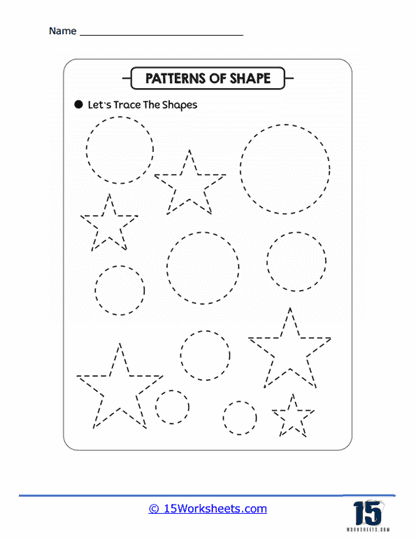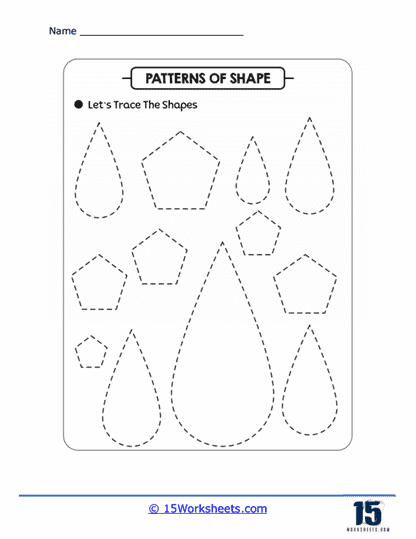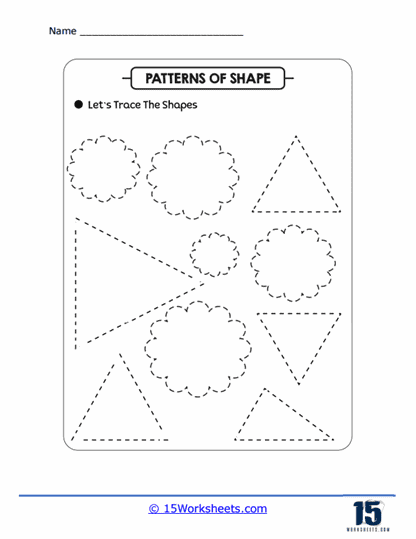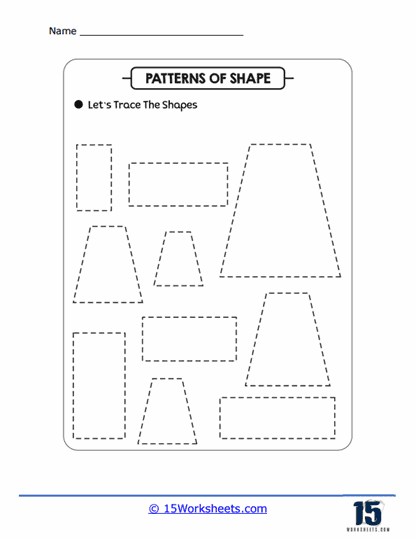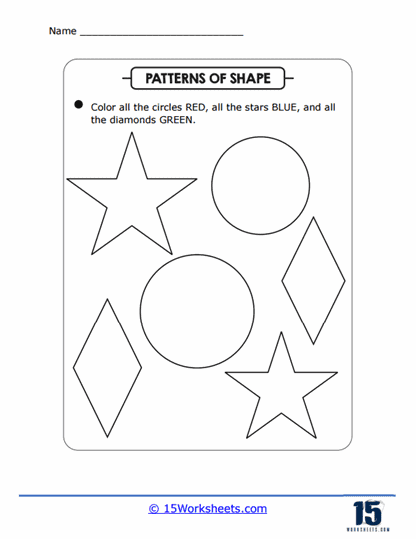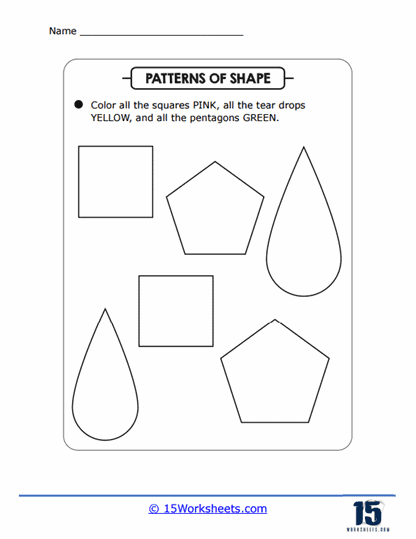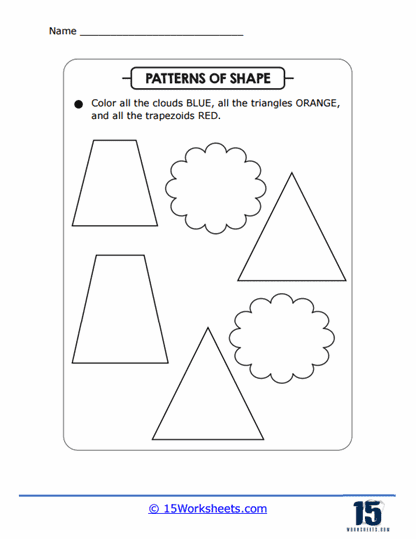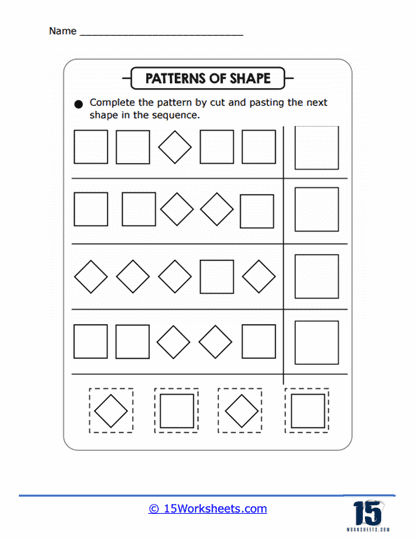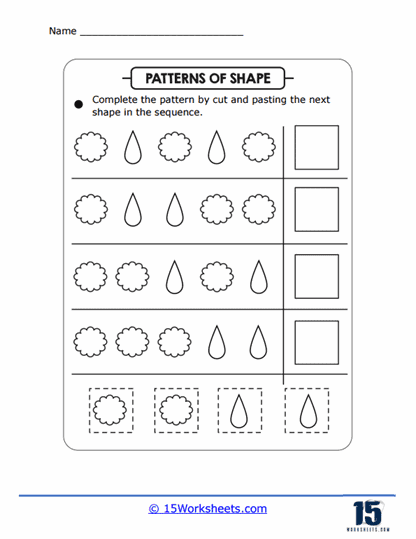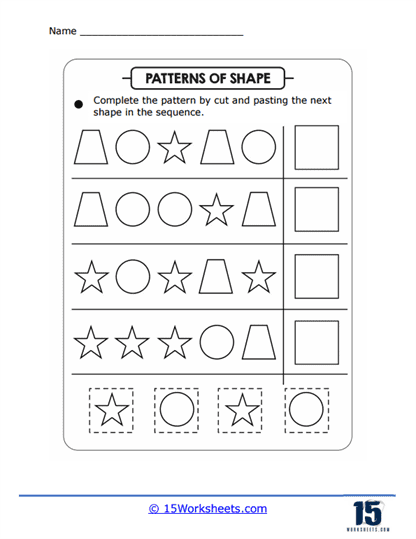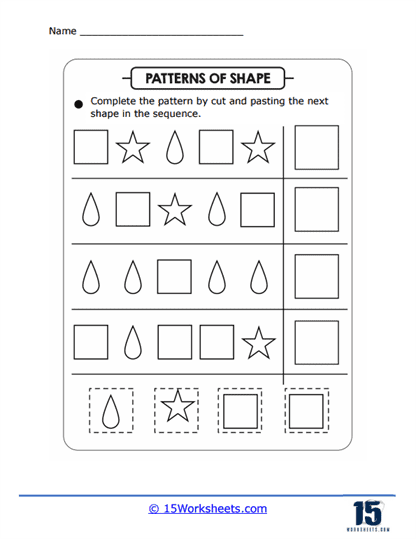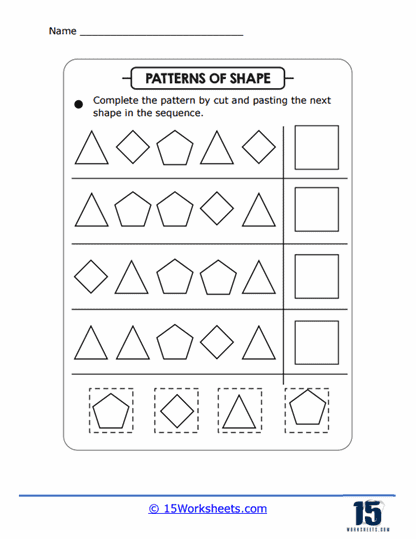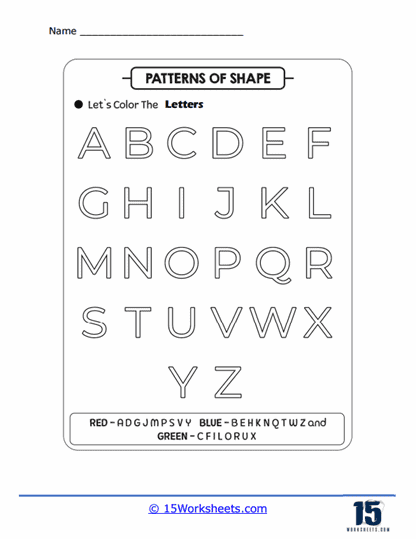Patterns of Shapes Worksheets
About These 15 Worksheets
Our patterns of shapes worksheets were to help children recognize, analyze, and create patterns using different shapes. These worksheets target students who are in the early stages of learning geometry and exploring spatial relationships.
Here are all of the different types of exercises you will come across in this set of worksheets:
Understanding Sequences – These worksheets provide an introduction to patterns, explaining that a pattern is a repeated sequence of shapes or objects. Students learn that patterns can be identified and created using various attributes of shapes, such as size, color, or orientation.
Recognizing and Analyzing Attributes– Worksheets include sequences of shapes that follow a specific pattern. Students practice recognizing and identifying the pattern by observing the arrangement and characteristics of the shapes. They might be asked to identify the next shape in the sequence or determine the missing shape based on the pattern. Students will be prompted to analyze the attributes of shapes within a pattern. For example, they might identify the common attributes, such as color or size, that repeat in the pattern. This helps develop their observation and critical thinking skills.
Creating and Extending – Students have opportunities to create their own patterns using shapes. Worksheets provide a set of shapes and instructions for creating a specific pattern. This activity encourages creativity and spatial reasoning skills as students explore different combinations and arrangements of shapes. Some worksheets include patterns that are partially completed. Students are challenged to extend the pattern by adding the next shapes based on the established pattern rule. This activity enhances problem-solving skills and the ability to recognize and apply pattern rules. For more advanced learners, worksheets may introduce more complex pattern concepts, such as rotation, reflection, or symmetry. Students explore patterns involving transformations of shapes and identify the relationships between the original and transformed shapes.
What Are the Benefits of These Worksheets?
- They develop pattern recognition skills, helping students identify and analyze the structure of patterns.
- They enhance critical thinking and problem-solving abilities as students predict, extend, and create patterns.
- They promote spatial reasoning skills by exploring the relationships and attributes of shapes within patterns.
- They foster creativity and imagination as students design and experiment with various shape combinations.
- They lay the foundation for more advanced mathematical concepts, such as geometric transformations and symmetry.
Patterns of shapes worksheets serve as valuable tools for teachers, parents, and caregivers to engage students in exploring spatial relationships and developing critical thinking skills. By working with these worksheets, students develop important skills that enable them to recognize patterns, analyze their attributes, and create their own patterns effectively, preparing them for more complex geometric concepts in the future.
What Are The Steps To Finding A Pattern?
Finding a pattern involves a systematic approach to identifying and understanding the regularity or structure within a set of data, objects, or events. Here are the steps to follow when trying to find a pattern:
Observe – Begin by carefully observing the given data or objects. Look for any recurring elements, sequences, or relationships. Pay attention to the characteristics, attributes, or changes in the data.
Identify Initial Pattern – Try to identify any initial patterns or trends that you notice. Look for similarities, repetitions, or sequences that may be present. Note any commonalities or regularities among the data points.
Analyze Relationships – Analyze the relationships between the elements of the data set. Consider how each element is related to the previous and subsequent elements. Look for any mathematical, geometric, or logical connections between the elements.
Formulate a Hypothesis – Based on your observations and analysis, develop a hypothesis or a proposed pattern. State your assumption about the underlying structure or rule that governs the data. This hypothesis will serve as your working explanation until further investigation.
Test and Validate – Test your hypothesis by applying it to additional data points or examples. Verify if the proposed pattern holds true for the new cases. If the pattern continues to emerge consistently, it strengthens the validity of your hypothesis. If not, reassess and refine your hypothesis.
Generalize and Extend – Once you have established a consistent pattern, generalize it by stating the underlying rule or relationship. Express the pattern in terms of a formula, algorithm, or description that captures the pattern’s essence. Use this generalization to extend the pattern and predict future elements or data points.
Communicate and Verify – Share your findings and the identified pattern with others. Explain your observations, analysis, and generalization. Encourage others to verify the pattern independently to ensure its validity.
Apply and Use – Apply the pattern you have discovered to solve problems, make predictions, or analyze similar situations. Utilize the pattern as a tool for understanding, predicting, or simplifying complex information.
Remember, finding a pattern requires patience, attention to detail, and logical reasoning. It may involve multiple iterations, adjustments, and refinements of your hypothesis. Practice and experience will enhance your pattern recognition skills and enable you to discover patterns more efficiently.

